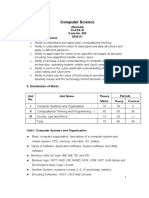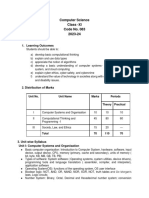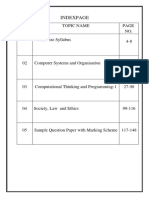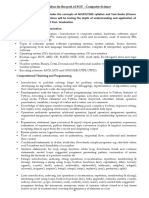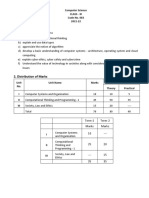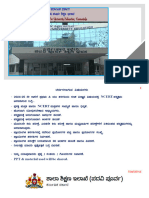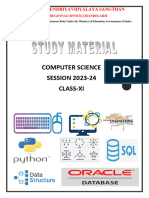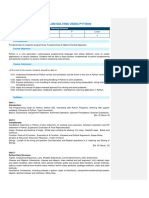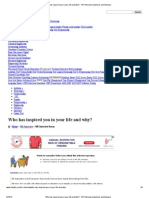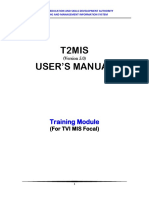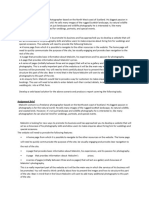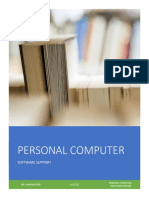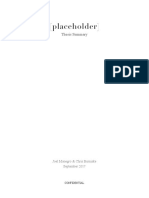0% found this document useful (0 votes)
19 views4 pagesSyllabus (CS)
The document outlines the curriculum for Computer Science for the academic year 2024-25, detailing learning outcomes, unit distribution of marks, and a comprehensive syllabus. Key topics include computational thinking, programming in Python, computer systems, and societal impacts of technology. Practical assessments and suggested readings are also included to enhance student understanding and application of the concepts.
Uploaded by
Jayant RajgariaCopyright
© © All Rights Reserved
We take content rights seriously. If you suspect this is your content, claim it here.
Available Formats
Download as PDF, TXT or read online on Scribd
0% found this document useful (0 votes)
19 views4 pagesSyllabus (CS)
The document outlines the curriculum for Computer Science for the academic year 2024-25, detailing learning outcomes, unit distribution of marks, and a comprehensive syllabus. Key topics include computational thinking, programming in Python, computer systems, and societal impacts of technology. Practical assessments and suggested readings are also included to enhance student understanding and application of the concepts.
Uploaded by
Jayant RajgariaCopyright
© © All Rights Reserved
We take content rights seriously. If you suspect this is your content, claim it here.
Available Formats
Download as PDF, TXT or read online on Scribd
/ 4
